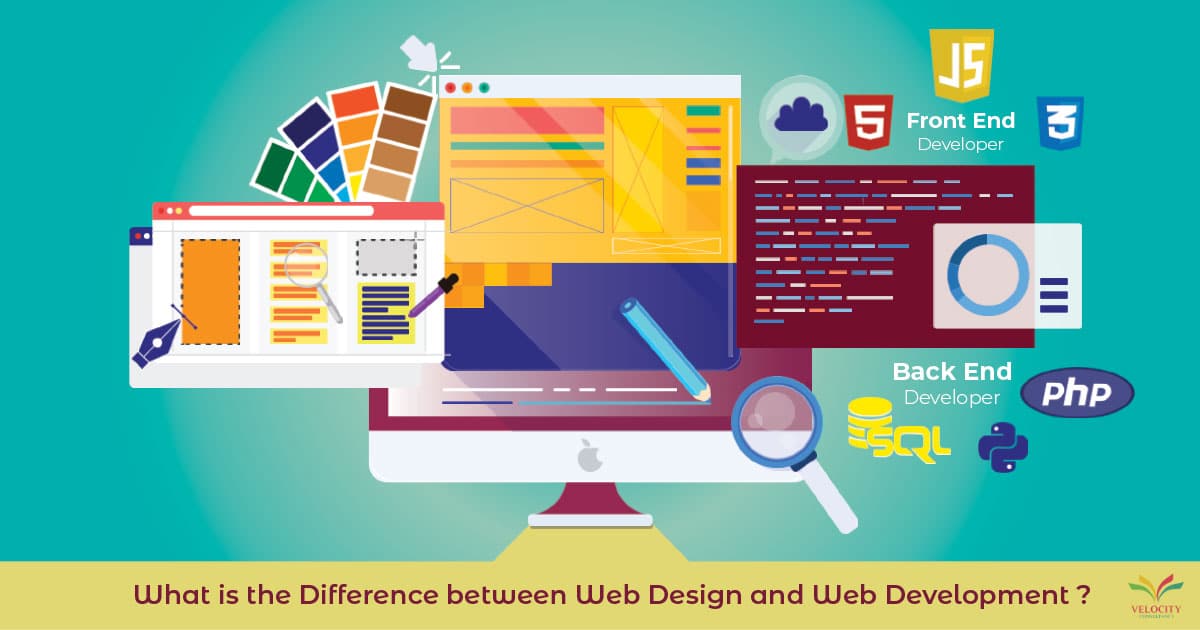Creating a Mobile-Optimized Website with Expert Web Design Techniques
Creating a Mobile-Optimized Website with Expert Web Design Techniques
Blog Article
Recognizing Customer Experience: Trick Principles for Effective Website Design
In the world of web style, understanding customer experience (UX) is extremely important to developing platforms that not only draw in yet additionally keep customers. Secret principles such as instinctive navigation and reliable feedback systems play vital duties in fostering individual fulfillment. In addition, considerations for access make certain that all users can engage with the web content perfectly.
Significance of Customer Experience

In the world of web design, one can not undervalue the value of individual experience (UX) as a critical component that directly influences the success of a web site. When users come across a user-friendly and appealing interface, they are much more most likely to explore the content, transform into clients, or share their experiences with others.
It includes the general performance of a web site, ensuring that navigation is seamless and information is easily available. Websites that prioritize UX are commonly regarded as even more qualified and credible, which can have a profound influence on conversion rates.
Ultimately, purchasing individual experience is not just a style option; it is a critical decision that can distinguish a brand in a congested market. By concentrating on UX, services can produce meaningful interactions that reverberate with customers, leading the means for continual success in the electronic landscape.
Use Concepts
Effective website design pivots on the application of crucial usability principles that ensure an internet site is both user-friendly and useful. Central to these concepts is the concept of intuition, where customers can browse the website effortlessly without comprehensive direction. Clear navigating structures, consisting of well-labeled menus and consistent designs, improve this instinctive experience, allowing individuals to locate details swiftly.

Uniformity is similarly crucial; preserving uniformity in design components, terms, and treatments throughout the site helps to minimize complication. Customers must not need to relearn exactly how to engage with various sections of the site.
Furthermore, error prevention and recovery are vital for use. Websites ought to be designed to decrease the opportunity of individual mistakes, and when blunders happen, constructive and clear mistake messages must guide customers towards resolution.
Ease Of Access Considerations
Ensuring availability in website design is vital for creating comprehensive digital experiences that provide to all users, consisting of those with impairments. Accessibility factors to consider involve creating websites that fit varied requirements, making it possible for users with visual, acoustic, cognitive, or electric motor impairments to browse and connect efficiently.
To attain this, internet designers need to stick to developed guidelines, such as the Web Web Content Ease Of Access Standards (WCAG) These guidelines supply a structure for making content perceivable, operable, reasonable, and durable. Key practices consist of ensuring adequate shade comparison, providing message choices for non-text content, and making sure key-board navigability.
Additionally, semantic HTML must be used to enhance display reader compatibility, permitting users with visual disabilities to comprehend the framework and meaning of web content without effort. web design. Giving clear, concise instructions and utilizing uncomplicated language can further improve use for people with cognitive disabilities
Regular ease of access testing, including genuine customers with impairments, is vital to identify barriers and enhance the customer experience. By navigate to these guys focusing on availability, internet designers not only follow lawful criteria however likewise promote a more fair digital landscape, ultimately benefiting every person with improved functionality and engagement.
Visual Design Components
A myriad of visual design components plays an important role in forming individual perceptions and experiences on a website. These components include color plans, typography, format, imagery, and whitespace, each contributing to the total aesthetic appeal and performance of a site.

Color design stimulate feelings and can influence user activities; for example, cozy colors might produce a sense of necessity, while trendy shades commonly advertise calmness. Typography, on the other hand, influences readability and can develop a brand's personality - web design. The selection of font design and dimension must align with the website's purposes and target market
Images, consisting of symbols and images, improves storytelling and can considerably impact customer interaction. Top notch visuals create a feeling of expertise, while poor-quality photos might interfere with the customer experience.
Design and whitespace are just as essential, as they lead users with the web content. A well-structured design aids users discover details quickly, while appropriate whitespace avoids mess, facilitating an extra pleasurable searching experience.

Checking and Iteration
Individual screening and iteration are essential parts of a successful internet design procedure. User testing entails observing how genuine customers interact with a web site, recognizing usability issues, and recognizing customer behavior.
Model, on the other hand, is the process of improving the design based on the insights obtained from customer testing. By making incremental changes and re-evaluating wikipedia reference the layout, groups can boost performance, enhance looks, and optimize customer involvement. This intermittent strategy cultivates a society of continual renovation, permitting developers to adjust to individual requirements and emerging patterns efficiently.
Furthermore, integrating both user screening and model right into the style process results in more educated decision-making and ultimately results in a more user-centered product. By embracing these principles, internet developers can develop extra instinctive, appealing, and effective experiences that resonate with their target audience, inevitably driving greater individual contentment and retention.
Verdict
To conclude, individual experience is an essential part of reliable internet style, including functionality, availability, and visual factors to consider. Sticking to well established principles enhances user contentment and involvement, cultivating a much more inclusive online environment. Continual screening and version serve as essential processes for resolving and determining user discomfort points, ensuring that internet designs remain versatile to developing needs. By focusing on these elements, internet designers can produce user interfaces that not only fulfill user assumptions but likewise promote enduring connections.
In the realm of web design, comprehending customer experience (UX) is paramount to producing systems that not just bring in but also keep individuals.In the realm of web layout, one can not take too lightly site web the significance of user experience (UX) as a critical aspect that directly influences the success of a web site. Customer screening entails observing just how real users interact with a site, identifying usability issues, and comprehending individual habits.In final thought, user experience is an important element of efficient web style, including functionality, availability, and visual factors to consider. Constant testing and iteration offer as essential procedures for recognizing and resolving customer discomfort points, guaranteeing that web designs continue to be adaptable to evolving demands.
Report this page